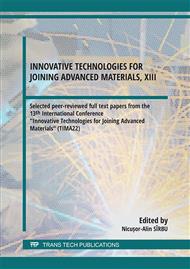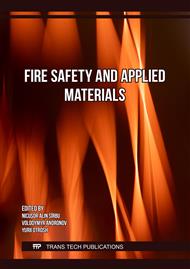p.3
p.11
p.17
p.25
p.35
p.43
p.51
p.61
Development of Magnetic Nanocomposites by Mechanical Grinding Technique
Abstract:
Nanocrystalline materials have different properties compared to materials with microcrystalline grains. Nanocomposites, as a subdivision of nanomaterials, have different magnetic properties for each individual constituent. In the paper, a series of nanocomposite materials from the sphere of W ferrites are developed by mechanical grinding. Mixtures of commercial BaO and α-Fe2O3 powders, in the micron range, were used. The commercial powders were mechanically ground in order to reach the nanometric range. The use of suitable grinding parameters for ceramic powders led to the discovery of the nanometric range in a not very long time. An important parameter, which was used in the current research, was wet grinding which is a more suitable method for obtaining finer powders than dry grinding. Dividing the materials as finely as possible ensures a better reactivity due to the free valences of the ions on the surface of the granules and due to the fact that the number of contact points and the contact surface are much larger than in coarse-grained materials. The powders were unilaterally compacted, using a cylindrical die with an inner diameter of 15 mm. A resistive heating device was designed and built in order to assure the sintering process of the samples. Before resistive sintering, a thermal simulation of the heating process was carried out to see the distribution of the thermal field in the samples at different temperatures. According to the simulation, the optimal heating temperature was chosen. The sintered samples were analyzed from the point of view of the magnetic properties and it was found that the samples with the granulation in the nanometric range have higher magnetic characteristics than those in the micron range.
Info:
Periodical:
Pages:
17-23
Citation:
Online since:
August 2023
Keywords:
Price:
Сopyright:
© 2023 Trans Tech Publications Ltd. All Rights Reserved
Share:
Citation:



